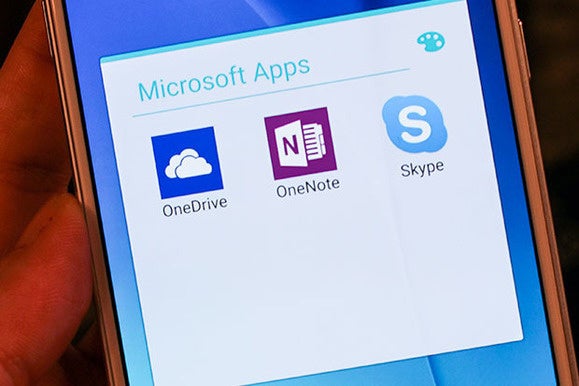It's no secret that Microsoft has had little success competing against Google Android or Apple iOS. But the PC software giant will give it another try with tools enabling developers to use code written for Android and iOS on Windows 10 devices.
Emphasizing its intentions to have its upcoming Windows 10 OS running on 1 billion devices, Microsoft will enable developers to reuse Java and C++ code from Android phone apps to create applications for phones running Windows 10, Terry Myerson, executive vice president of operating systems, said at the company's Build developer conference in San Francisco on Wednesday. "To make this possible, Windows phones will include an Android subsystem."
Keying in on the company's universal Windows apps concept, Myerson also said developers will be able to compile Objective-C code from iOS applications for use within Visual Studio on Windows. As an example, he showed a demonstration in which an Apple Xcode project was converted to a Visual Studio solution.
The Windows 10 accommodations for Android, iOS, Win32, JavaScript. Net, Win32, and Cordova applications are provided via Universal Windows Platform Bridge tool kits, for moving code over with minimal modifications. Microsoft also will add support for bringing Win32 and .Net apps over to Windows Store, so they can take advantage of universal Windows platform capabilities, Myerson said.
Microsoft's announcements reflect a major change in software and services and a renewed focus on developers, according to Forrester. "Microsoft is making a major play to win back developers, by promising access to 1 billion devices," Forrester analyst Michael Facemire said in an emailed statement. "They've opened up the once-impenetrable castle walls, allowing development using a wide range of languages, platforms, and tools. Its play is to create the largest cross-device experience ecosystem, embracing all existing development options, including Android and iOS, along with traditional Windows development."
In a nearly three-hour keynote presentation, the company also revealed the name of its new browser for Windows 10: Microsoft Edge, formerly known as Project Spartan. Microsoft also made available a release candidate for its Visual Studio 2015 software development platform, which is planned for general release later this summer. Visual Studio 2015 RC features capabilities for building universal Windows apps, cross-platform mobile development support, and a preview of Visual Studio Tools for Docker, for deploying .Net Core applications to Docker containers.






